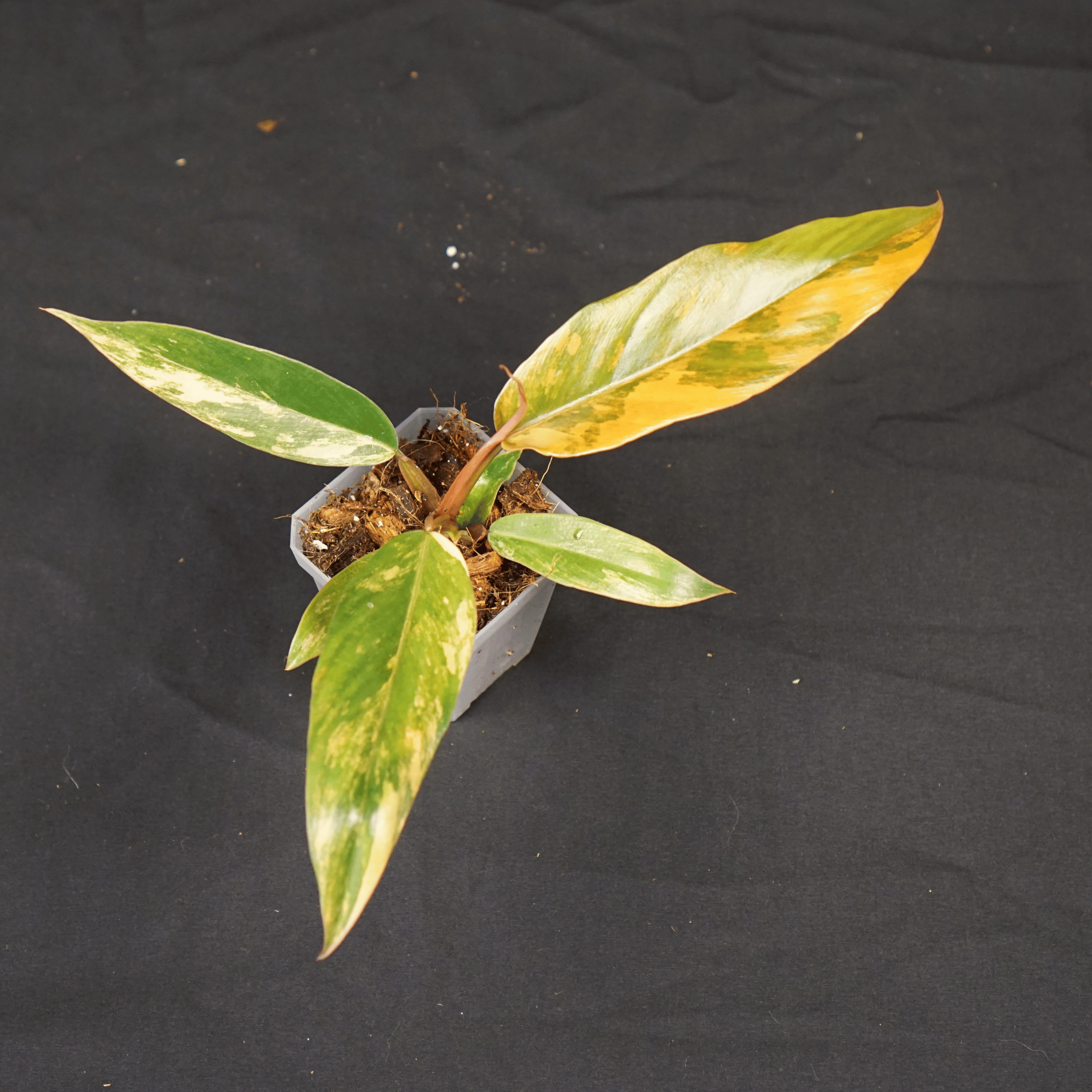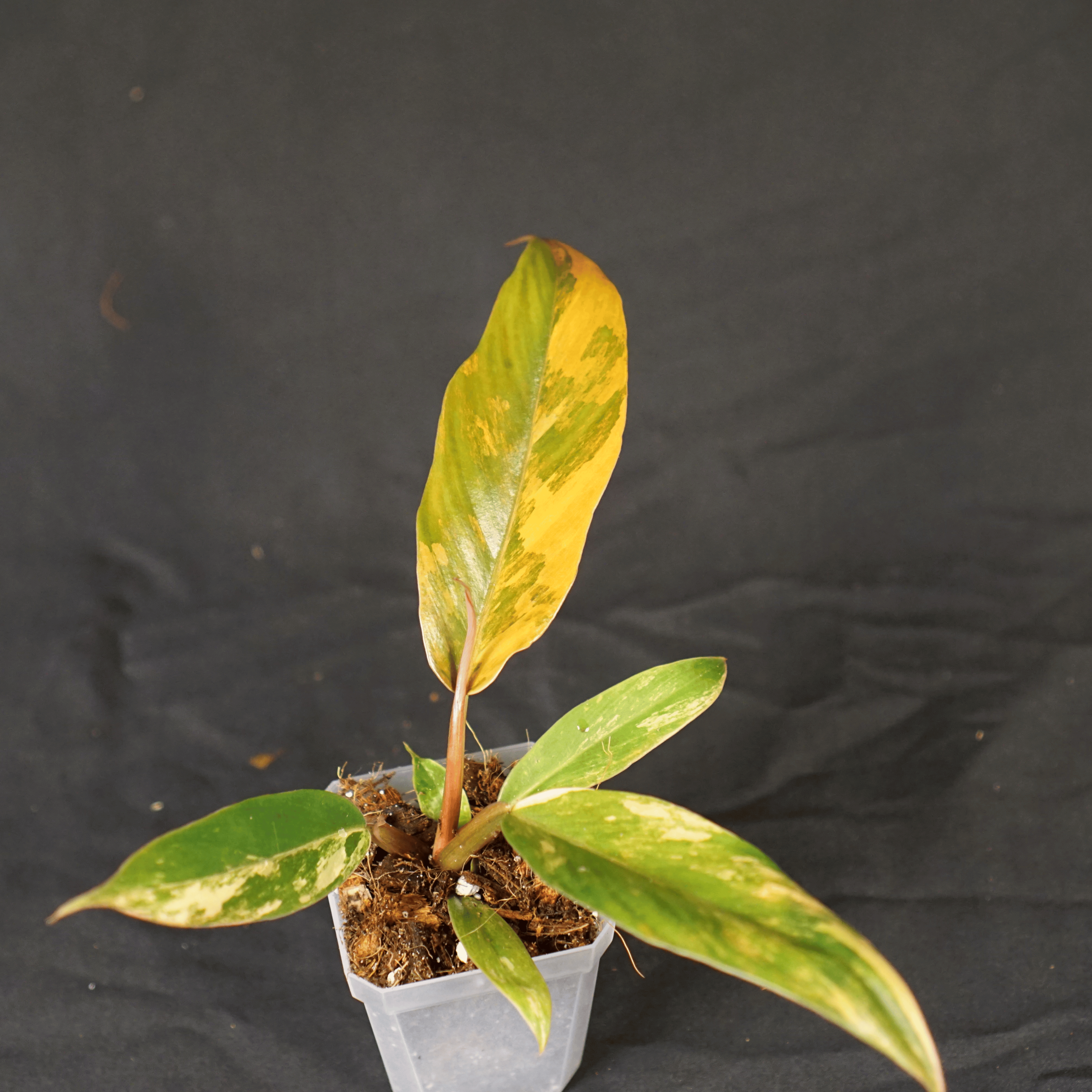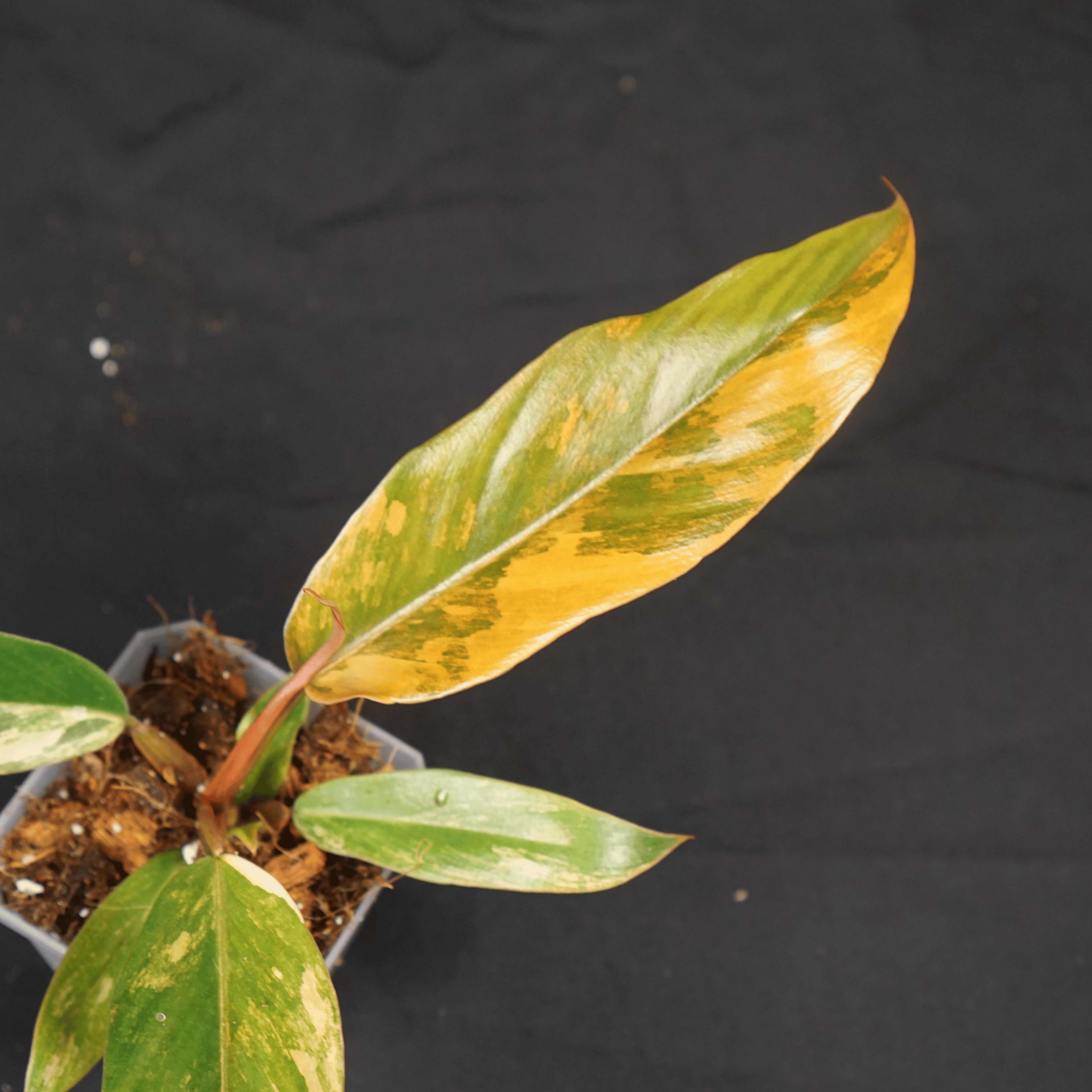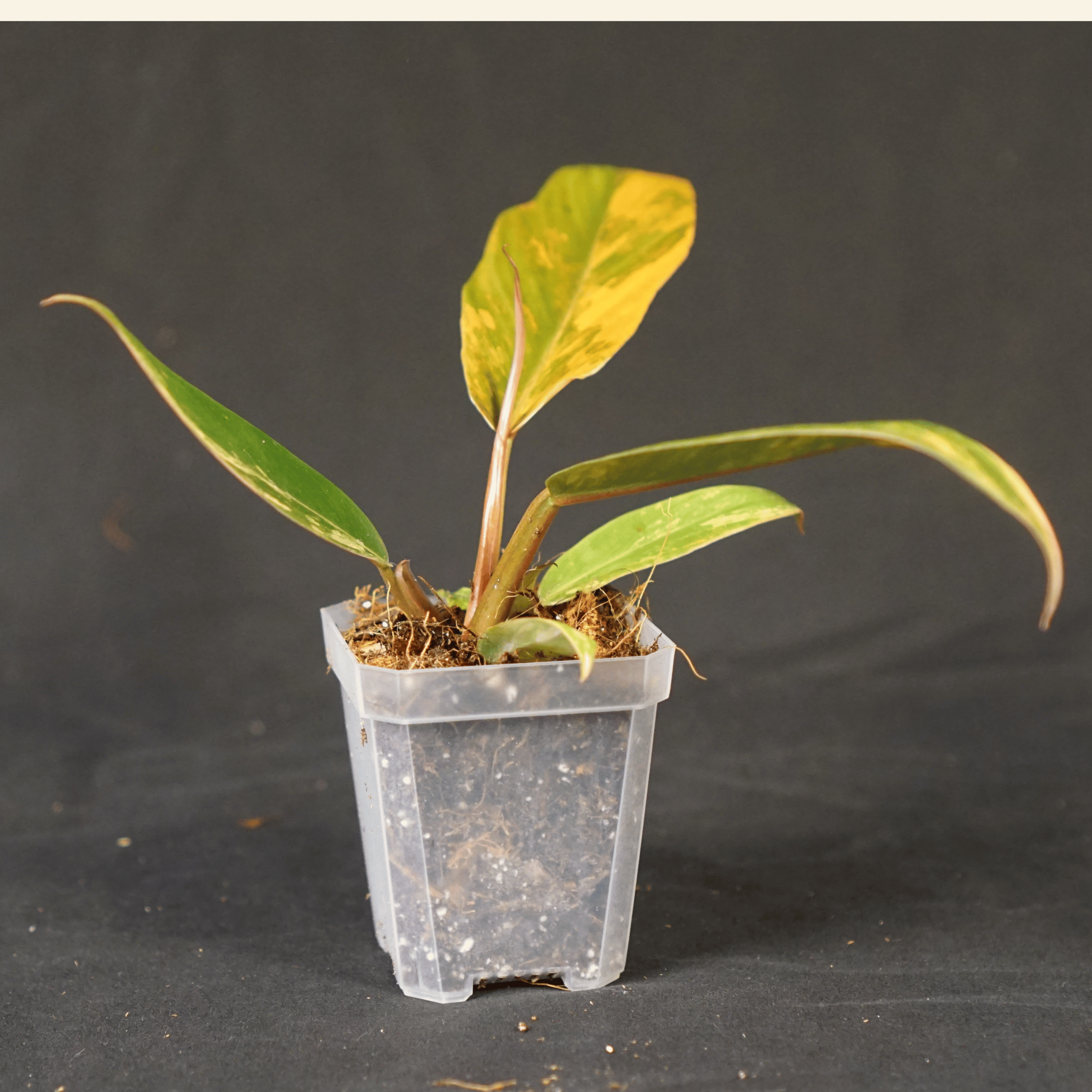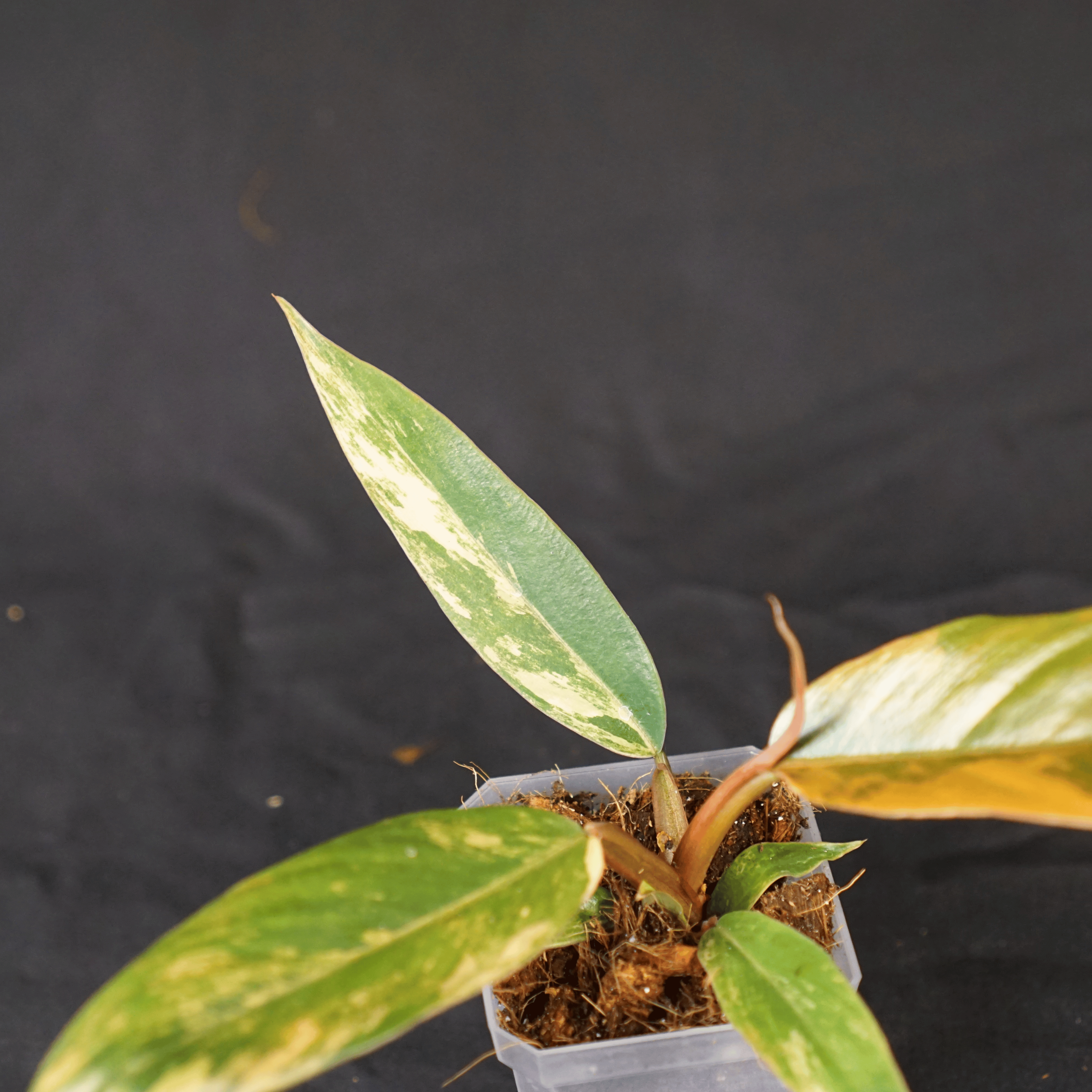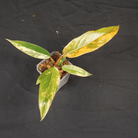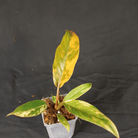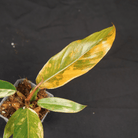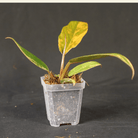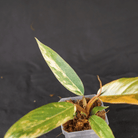Color built by layers
This is the exact plant shown — rooted, stable, and currently pushing growth in a 4" pot.
Philodendron ‘Caramel Marble’ is a rare, self-heading variegated hybrid, best known for its rich caramel tones layered with butterscotch, cream, mint, and soft green. Unlike many variegates, the color shifts here are not just pigment-suppressed zones, but the result of complex anthocyanin and chlorophyll interaction, giving this plant its signature warm palette. Some leaves lean peachy. Others throw near neon-green-on-gold. Every new unfurl is different.
This plant does not climb. As a self-heading hybrid, it pushes foliage from a single, upright growing point with thick, petiole-supported leaves and minimal internodal spacing. The overall structure stays compact, making it ideal for collectors who want saturated color without sacrificing form.
Variegation pattern is chimeric, meaning it arises from genetically distinct cell layers in the growing tip. It’s not stable in every leaf — but with good light and patience, color tends to intensify as the plant matures.
Format Options – 2.5" Pot
-
Exact Plant – 2.5" Pot
The specific plant shown. Fully rooted in aroid mix, actively growing, and stable. You’ll receive the exact plant pictured — no guesses, no substitutions. -
Grower’s Choice – 2.5" Pot
A healthy, rooted plant from our Caramel Marble stock. Each one is selected for structural integrity and visible variegation. Pattern and tone vary naturally, but all meet our internal threshold for color and vigor.
Philodendron ‘Caramel Marble’ Care Overview
| Requirement | Details |
|---|---|
| Light | Bright, indirect light. Essential for maintaining high variegation contrast. |
| Humidity | 60–80%. Higher humidity encourages broader, cleaner leaf form. |
| Watering | Allow top 1–2" of soil to dry before watering. Avoid prolonged wetness. |
| Substrate | Well-draining aroid mix: peat, bark, perlite, and pumice. |
| Temperature | 65–85°F. Consistent warmth preferred. |
| Feeding | Fertilize monthly with a balanced, low-nitrogen formula. |
| Growth Habit | Self-heading. Does not climb. Remains upright and compact. |
| Pests to Watch | Thrips and spider mites. Pale and warm-toned tissue may show damage sooner — monitor regularly. |
Shipping Note:
This plant ships rooted in soil, carefully packaged for safe arrival. Due to the thin tissue in variegated zones and anthocyanin activity, minor cosmetic wear may occur during transit—such as soft edge crisping or slight tip blemishes. These are aesthetic only and do not affect plant health. Your plant will arrive clean, stable, and ready to keep growing.
Our Live Delivery Guarantee
We stand behind every leaf and every mite. If your plant or predatory insects don’t arrive alive on the first delivery attempt, we’ll make it right.
Here’s what you need to know:
- Email us at info@fgmnnursery.com within 24 hours of delivery
- Include clear photos of the item and the shipping label
- Someone must be available to receive the package—plants and bugs don’t do well sitting in the sun, a mailbox, or the back of a delivery truck
For plants, we offer store credit if something goes wrong.
For predatory mites and beneficial insects, you’ll have the choice of a replacement shipment or store credit.
If you contact us after the 24-hour window, we may still be able to help—just know it’s handled case by case.
We pack with care, insulate when needed, and check the weather before shipping. But once it’s in transit, the fastest way to protect your order is to open it right away.

